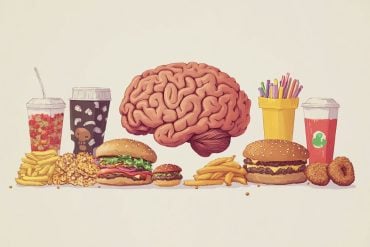Summary: According to researchers, the ‘fill in’ effect makes only a small contribution to how we perceive colors in an image. The study also provides new evidence that color processing cells play a vital role in color perception.
Source: City University London
When we view natural images the colours we perceive are due to colour information at every local patch of an image, rather than how colours interact when they transition from one point to another, according to a new study from researchers at City, University of London.
The finding supports the role that colour processing cells in the brain play when interpreting colour, as previous it has been suggested that an effect called colour ‘filling-in’ – in which the brain takes information at the edge between two colours and uses it to compute what the neighbouring colours should be – influenced how we perceive colours in natural images.
Instead, the researchers found that this ‘filling-in’ effect only makes a small contribution to how colourful an images appears, as when natural images were restricted to such ‘edge transitions’ they did not appear to be very colourful.
To investigate the effect, the researchers carefully filtered natural images to remove the colour differences except at the edges. When they carried out this process they found that the edge information was not sufficient to carry the colour perception in the regions where the colour had been removed.
As a result, the researchers conclude that while a weak ‘filling-in’ effect occurs, it only accounts for around 5%, and therefore cannot account for the rich colours we see in the natural world.

This finding is significant, as it provides evidence to support the vital role that colour processing cells in the cortex play in colour perception. Crucially, these cells are not sensitive to edges and only to the colours themselves present in such colour fields. It was also seen that purely chromatic images with maximally graded (‘edgeless’) transitions look fully colourful.
This also has important practical implications as it shows that you cannot effectively compress image information to only the edge colour information. The study is published in the journal i-Perception.
Professor Christopher Tyler, lead author of the study, said:
“While the mechanisms through which we perceive colour when viewing natural images has been debated for a long time, our new study highlights the important role of colour processing cells. As instead of the transitions between colours influencing the colours seen through ‘filling-in’, we instead found that the individual colours seen at each local point determine what we see.”
Source: George Wigmore – City University London
Publisher: Organized by NeuroscienceNews.com.
Image Source: NeuroscienceNews.com image is in the public domain.
Original Research: Open access research for “Does Colour Filling-In Account for Colour Perception in Natural Images?” by Christopher W. Tyler, and Joshua A. Solomon in i-Perception. Published May 7 2018.
doi:10.1177/2041669518768829
[cbtabs][cbtab title=”MLA”]City University London “How We Perceive Color.” NeuroscienceNews. NeuroscienceNews, 15 May 2018.
<https://neurosciencenews.com/color-perception-9050/>.[/cbtab][cbtab title=”APA”]City University London (2018, May 15). How We Perceive Color. NeuroscienceNews. Retrieved May 15, 2018 from https://neurosciencenews.com/color-perception-9050/[/cbtab][cbtab title=”Chicago”]City University London “How We Perceive Color.” https://neurosciencenews.com/color-perception-9050/ (accessed May 15, 2018).[/cbtab][/cbtabs]
Abstract
Does Colour Filling-In Account for Colour Perception in Natural Images?
It is popular to attribute the appearance of extended colour fields to a process of filling-in from the differential colour signals at colour edges, where one colour transitions to another. We ask whether such a process can account for the appearance of extended colour fields in natural images. Some form of colour filling-in must underlie the equiluminant colour Craik–O’Brien–Cornsweet effect and the Watercolour Effect, but these effects are too weak to account for the appearance of extended colour fields in natural images. Moreover, the graded colour disappearance effect reported as evidence for colour filling-in does not work under natural viewing conditions. We demonstrate that natural images do not look very colourful when their colour is restricted to edge transitions. Moreover, purely chromatic images with maximally graded (edgeless) transitions look fully colourful. Consequently, we conclude that colour filling-in makes no more than a minor contribution to the appearance of extended colour regions in natural images.






